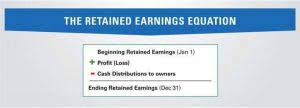Content

However, if the marginal cost is higher than the selling price, it might be better to reduce output or find ways to decrease production costs. The company initially produces 100 candles at a total cost of $800. When production increases to 110 candles, the total cost rises to $840. However, as production continues to rise beyond a certain level, the firm may encounter increased inefficiencies and higher costs for additional production. This causes an increase in marginal cost, making the right-hand side of the curve slope upwards.
Businesses are often trying to figure out how expensive it will be to produce a specific number of items. A cost function is a mathematical formula that can be used to calculate the total cost of production given a specific amount of items produced. Marginal revenue (MR) Accounting for Startups: The Ultimate Guide is an economic concept used in business to optimize profits. Marginal revenue is the revenue generated for each additional unit sold relative to marginal cost (MC). This is useful for businesses to balance their production output with their costs to maximize profit.
Marginal cost and revenue: Formulas, definitions, and how-to guide
In cash flow analysis, marginal cost plays a crucial role in predicting how changes in production levels might impact a company’s cash inflow and outflow. In financial modeling, understanding https://accounting-services.net/small-business-bookkeeping-services/ the marginal cost is vital. For example, projecting future cash flow or evaluating the feasibility of a new product line could rely on knowing the cost of additional production.
What is marginal cost formula examples?
A manufacturing company has a current cost of production of 1000 pens at $1,00,000, and its future output expectation is 2000 pens with a future cost of production of $1,25,000. So the calculation of the marginal cost will be 25. Now, Marginal Cost = 25000/1000.
Understanding a product’s marginal cost helps a company assess its profitability and make informed decisions related to the product, including pricing. While the average cost of producing wallets was $10, the marginal cost of an extra wallet is just $5. By implementing marginal cost calculations in your financial analysis, you can improve the accuracy of your forecasts, make more informed decisions and potentially increase your profitability. Understanding and accurately calculating marginal cost is vital in microeconomics and business decision-making. From pricing strategies to financial modeling and production plans to investment valuations — marginal cost insights can be crucial in all these areas.
Business Studies
Units of their product, the revenue function will tell them how much revenue will be generated by the ??? Units, the cost function will tell them how much it’ll cost to produce the ??? Units, and the profit function will find the total profit gained from producing and then selling the ???
- How can we calculate the marginal cost using the marginal cost formula?
- Thus, the correlation between cost function and profit function states that a business cannot change their profit without changing their production and their total production cost.
- To find the marginal cost, derive the total cost function to find C'(x).
- It stays at that low point for a period, and then starts to creep up as increased production requires spending money for more employees, equipment, and so on.
- Based on the math above, your company is looking at a marginal cost of $5 per additional hat.
- The total change in cost is $5k, while the total change in production is 100 units.
Rational companies always seek to make as much profit as possible. Understanding the relationship between the marginal cost of production and marginal revenue helps them identify the point where this occurs. The target is the profit maximization point where marginal revenue equals marginal cost. In a perfectly competitive market, marginal revenue equals the product price at all output levels. Because firms are price takers, they can sell as many products or services as they wish at a given price, and price decreases are not required to spur additional sales. A competitive firm’s price equals its marginal revenue and average revenue because it remains constant over other varying output levels.
Products
Both are important metrics for looking at business’s profitability and planning. Dummies has always stood for taking on complex concepts and making them easy to understand. Dummies helps everyone be more knowledgeable and confident in applying what they know.
